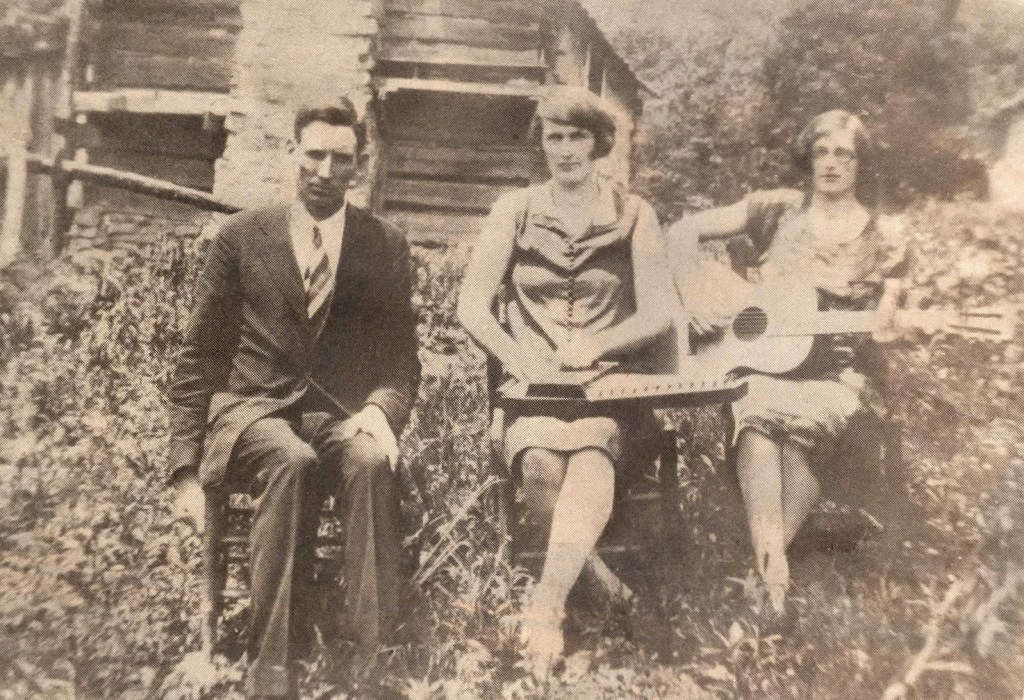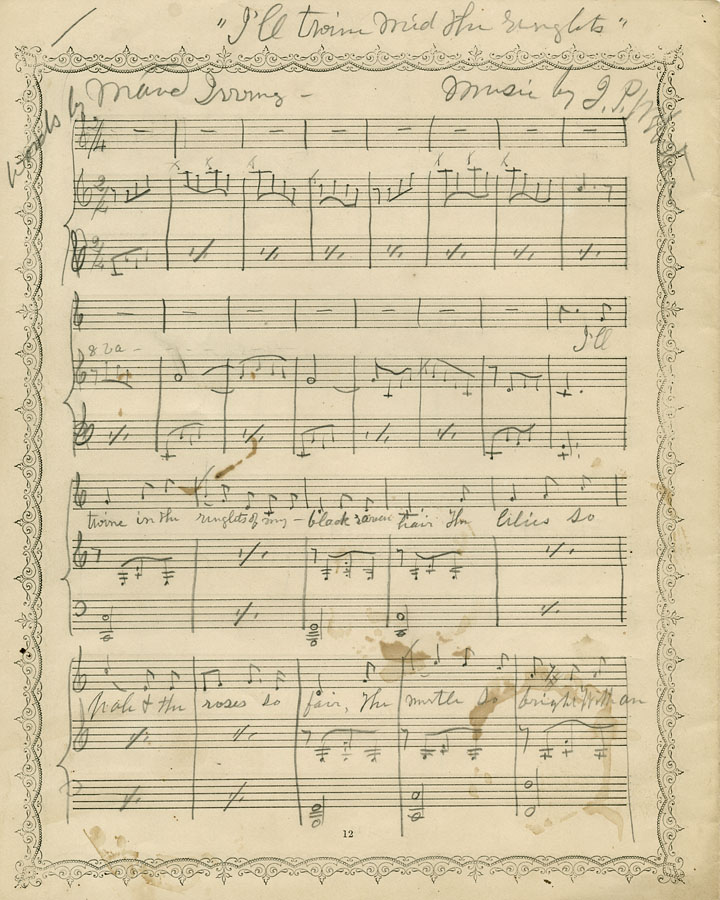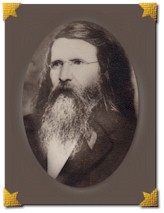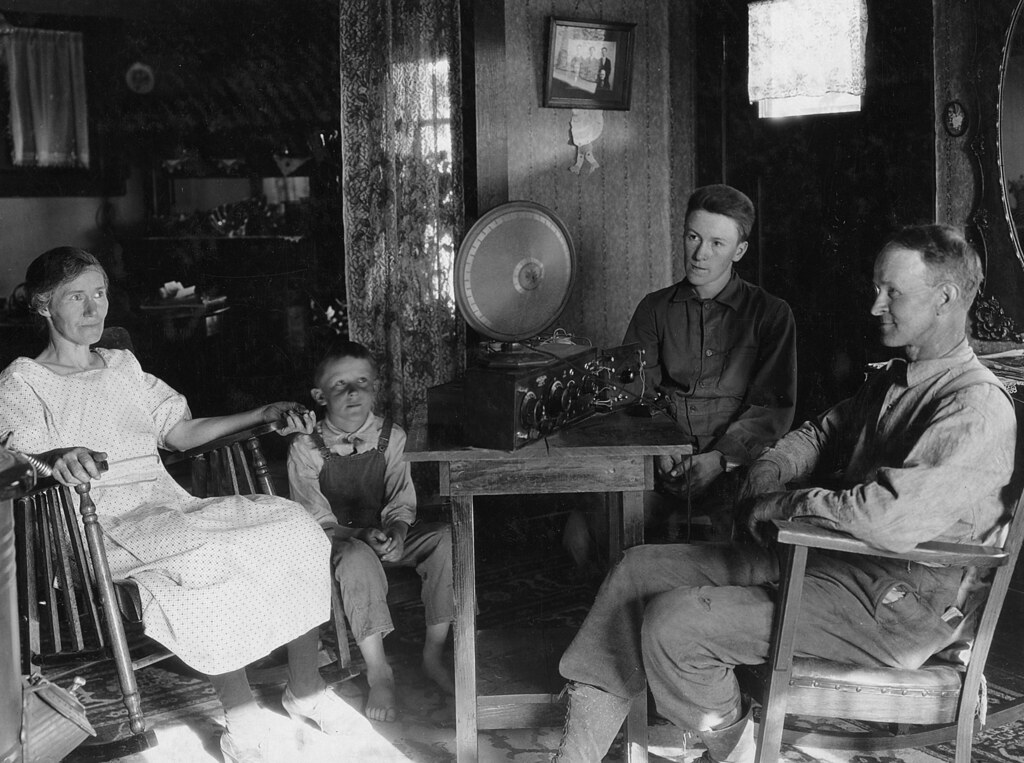
Those of you who watched the Ken Burns PBS special series on Country Music a couple of years ago are probably aware of the history of southwestern Virginia’s Carter Family and their early recordings. These—and the radio broadcasts that featured their music—cemented them and their work as true American musical pioneers.

The original group consisted of Sara Carter, her husband A.P. Carter, and her cousin and sister-in-law Maybelle Carter. All three grew up immersed in the tight harmonies of mountain gospel music and shape-note singing. They were the first group to perform their style of music on the radio in the 1920s.

The most haunting of their songs is the ballad “Wildwood Flower.” The Carter Family reworked a much older song and gave us this lament of a young woman whose “true love” turned out to be a two-timing rascal who made off with someone else. Our heroine—who calls herself a “pale wildwood flower”—reflects on and then rejects her sad state.

She then vows to move on while wishing her roaming ex-lover his “regrets.” You go, girl! How many times have we heard this story in musical genres from blues to country to rap? This song is the grandmama of them all!

Click or tap on the triangle in the next image for a listen to this scratchy oldie.
Of particular interest to music historians is Maybelle Carter’s innovative guitar playing style, dubbed the “Carter Scratch.” She played melody with her thumb on the low strings and harmony on the high ones—a finger picking style adopted by many folksingers today. For a look and listen, tap or click on the triangle in the next image.
Now for a bit of back story. The earlier song that the Carters “harvested,” was published in 1860 with music composed by Joseph Philbrick Webster and words by Maud Irving. It was titled “I’ll Twine ‘Mid the Ringlets.“

Webster was a New Englander, studied music in Boston, and–as a classical singer–had performed with Jenny Lind. His most popular work was the hymn “In the Sweet Bye and Bye.”

Maud Irving, on the other hand, was a pseudonym used by one J. William Van Namee, a poet and spiritualist who used this more feminine name when his rather eclectic poetry was published in the “lady’s magazines” of the day.

Needless to say, many other versions of the song evolved in the decades before the Carter Family “harvested it from the hills” and remade it their own. But, to give Webster his due, click or tap on the triangle in the next image for a listen to his hymn by a singer who married the daughter of Maybelle Carter in later years. All in the family!
Now click or tap on the triangle in the next image to hear Webster’s original song performed by Robin and Linda Williams, with a good introduction:
The Carter version includes a line about “wishing his regrets.” But the
original lyrics clearly show that our young lady remains heartbroken and this lays out the sad, tragic nature of the song. On the other hand, the Carters seem to have given us an updated version with—to me—a bit more upbeat ending.
Was this an early attempt to keep a song commercially viable for a rural
radio audience in the hard times of the 1920s? Hmmm . . .

On a further note, the melody of our song had another well-known reincarnation.

It was used by that famous re-worker of traditional melodies, Woodie Guthrie, in his song: “The Sinking of the Reuben James”—a musical plea to “remember the names” of the 100 sailors who perished in the 1941 sinking of the American convoy escort USS Reuben James, the first U.S. Navy ship sunk by German U-Boats in World War II.

Later, during the war, Guthrie served with the US Merchant Marine on convoy duty and twice survived torpedo attacks himself. Who knew? Click or tap on the triangle in the next image for a look and listen.
Goes to show—you can always tweak an old song with
a few new lyrics; and—in folk or country music— with second-hand songs you can’t keep a good melody down.

Keep on the lookout for second hand songs and, of course, STAY TUNED!